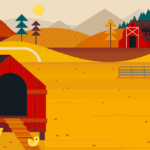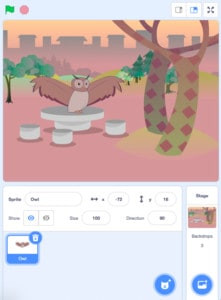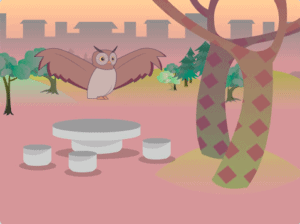Introduction
Scratch is a basic coding language that uses a ‘building block’ style coding to create animated stories, interactive games, simulations, and beautiful artwork. In using Scratch, learners will be introduced to basic coding concepts and develop their computational thinking skills while bringing their own ideas to life. In this series, the basics of Scratch will be introduced to provide learners with the foundational skills required to begin creating in Scratch.
Scratch makes it easy for learners who are just starting out by organizing the types of code you can use into categories. The code blocks are grouped by the following categories: Motion, Looks, Sound, Events, Controls, Sensing, Operators, Variables and My Blocks. These code blocks can be pieced together in the Code Area like placing jigsaw puzzle pieces together. Both the Code Area and the Stage are visible at the same time which allows learners to run code, test, debug and view their creations.
According to the Scratch Wiki, Scratch’s coordinate system uses 2 coordinates, “X position” and “Y position”, to determine the location of a sprite on the Stage. The “X position” value determines the horizontal location of the sprite and the “Y position” value determines the vertical location or height. Every Scratch project whether it be a game, story or animation will always have the x,y grid behind the Stage to determine where sprites are located.
In this episode, learners will explore:
- Gliding from one point to another on the Stage
- New Events block “when this sprite clicked”
Vocabulary
The following vocabulary definitions are from the Scratch Wiki.
Block Palette (Scratch) - The Block Palette is the area on the left of the screen when the Code button is opened. On the left, there is an area that contains the nine sections of blocks in Scratch. To the right of that, there is an area that contains blocks that can be dragged into the Code Area to make code.
Code Area (Scratch) - The Code Area is the large empty space to the right of the Block Palette. It is an area for storing blocks that run the project. Blocks can be dragged from the Block Palette into the Code Area and arranged to form scripts.
Sprite (Scratch) - Either user-created, uploaded, or found in the sprites library, are the objects that perform actions in a project.
Sprite Pane (Scratch) - It is a white area located beneath the Stage where all sprites present in a project can be easily accessed to modify or inspect.
Stage (Scratch) - The stage is the area where the sprites are and perform their actions. It is located in the top of the area to the right of the Code Area.
X-coordinate - A sprite’s X-coordinate is its location on the x (horizontal) axis of the stage. The value increases or decreases depending on how far right or left (respectively) on the Stage the sprite is, where the lateral center is 0.
Y-coordinate - A sprite’s Y-coordinate is its location on the y (vertical) axis of the stage. The value gets higher or lower depending on how far up or down on the Stage the sprite is, from where the vertical center is 0.
Materials
Computer Activity
This episode will take you through the steps of making your sprite glide from one position to another on the Stage.
Add Your Sprite and Background
- Choose a Backdrop for your project and a sprite that you want to code to make it glide from one point to another on the Stage. If you need help with how to choose a sprite, see Scratch Basics – Episode 2: Deleting a Sprite, Adding a Sprite & Adding a Backdrop for more information.
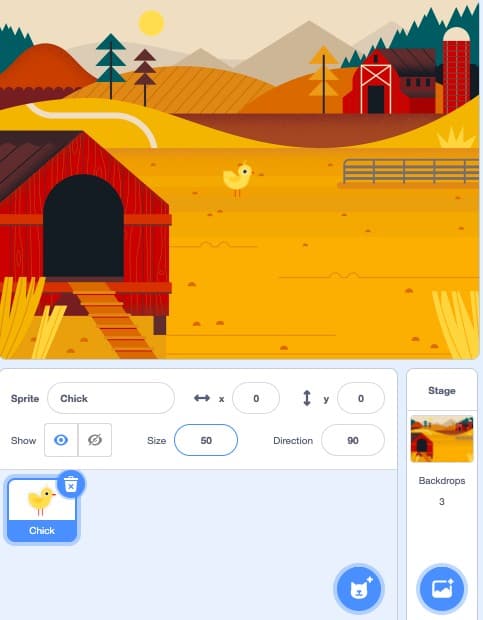
Gliding From One Point to Another
- Click and drag your sprite on the Stage to the location you want your sprite to begin, each time you run your code.
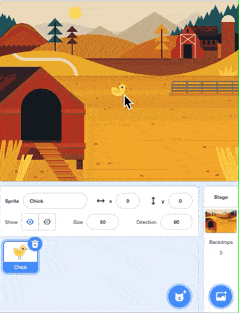
This will change the x-coordinate and y-coordinate of your sprite in the Sprites Pane.
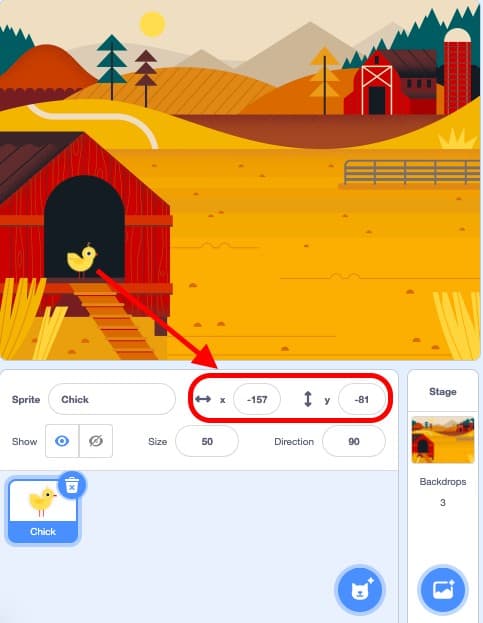
- Click and drag a ‘when this sprite clicked’ block from the yellow Events category in the Block Palette on to the Code Area. This block will tell your code to run when you click on your sprite on the Stage.
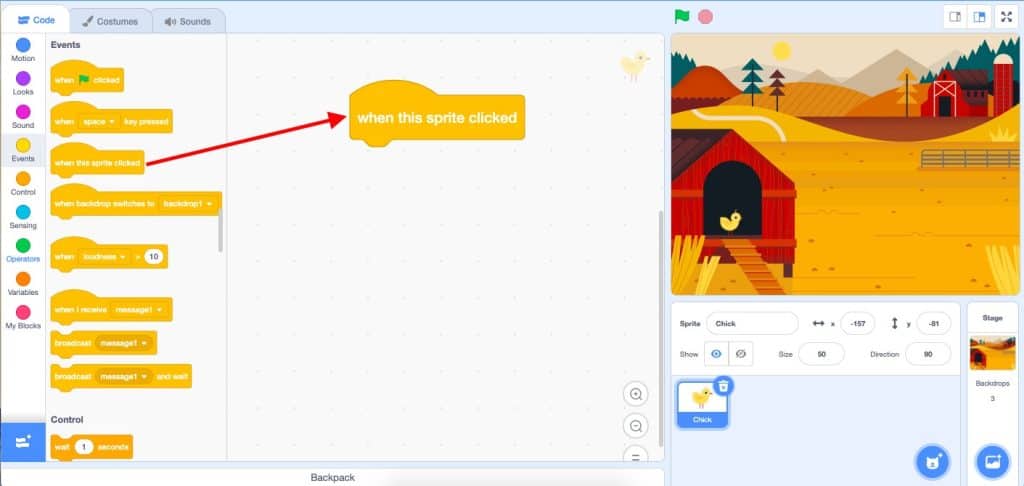
- Click and drag a ‘go to x: y:’ coordinates block from the Motion category in the Block Palette on to the Code Area. This block will tell your sprite where to begin on the Stage when you run your code. You will notice that the x-coordinate and y-coordinate inside the block match the x-coordinate and y-coordinate of your sprite in the Sprites Pane.
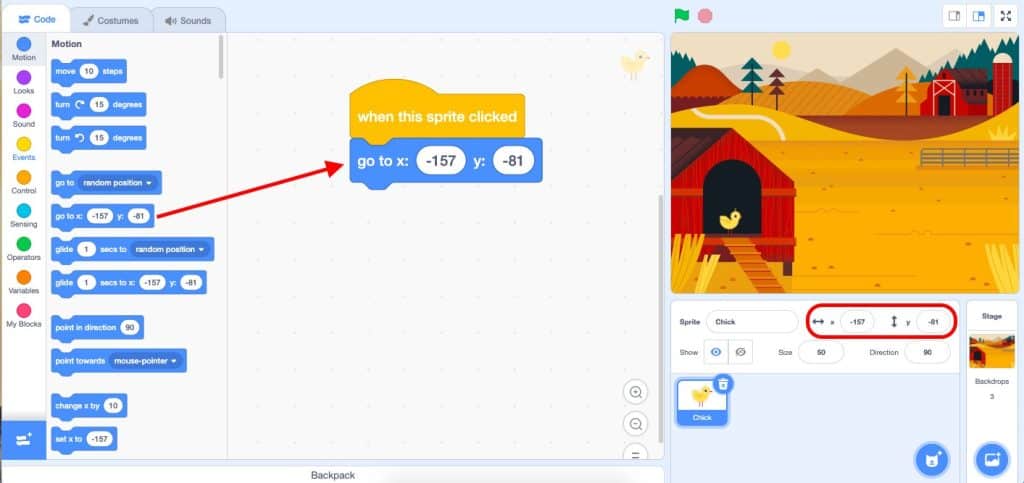
- Click and drag a ‘wait 1 seconds’ block from the Control category in the Block Palette on to the Code Area. This wait block will tell your sprite to wait a specific amount of seconds before gliding to its next given x-coordinate and y-coordinate. You can change the number of seconds in the white bubble on the block.
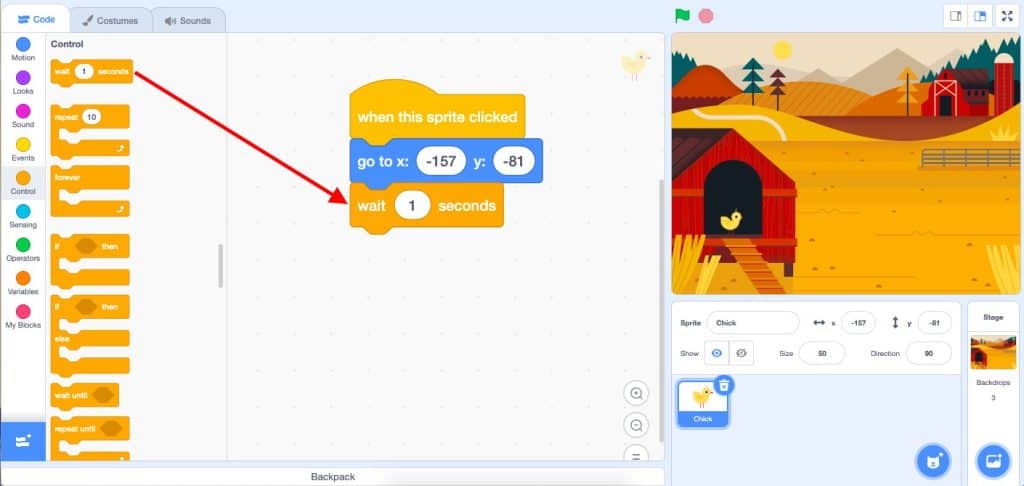
- Click and drag your sprite on the Stage to the next location you want your sprite to move to. In the image below, I dragged my sprite to the bottom of the ladder.
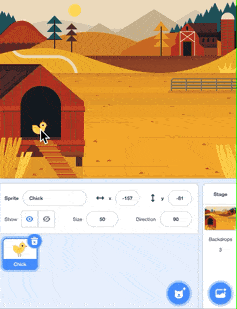
This will change the x-coordinate and y-coordinate of your sprite in the Sprites Pane.
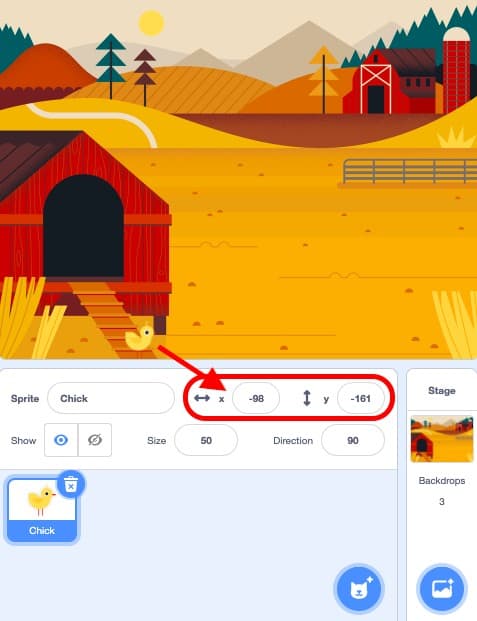
- Click and drag a ‘glide 1 secs to x: y:’ coordinate block from the Motion category in the Block Palette onto the Code Area. This block will tell your sprite to glide for 1 second to the new x-coordinate and y-coordinate. You will notice that this block will have the x-coordinate and y-coordinate from the last step.
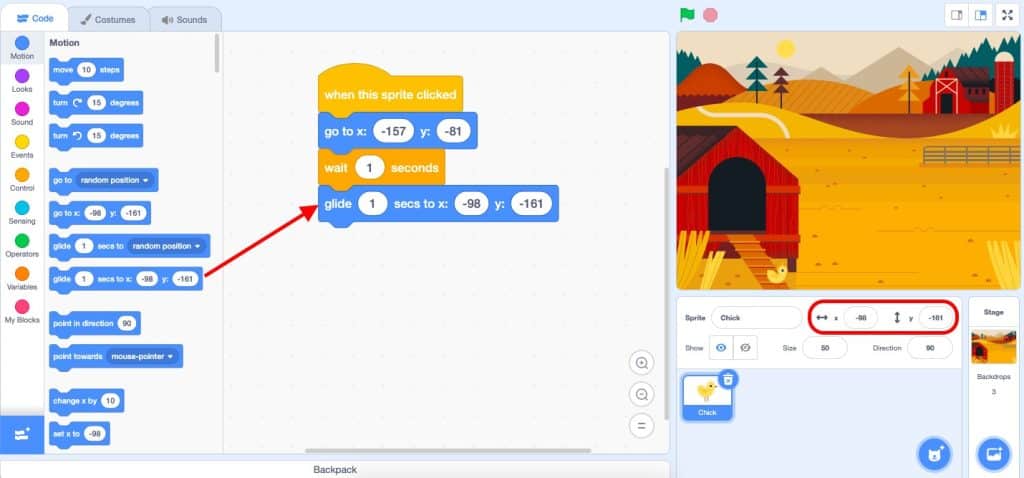
- Test your code by clicking on your sprite on the Stage!
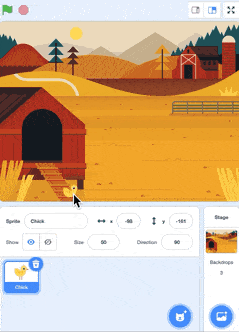
Conclusion
In this episode you learned basic Scratch concepts such as how to code a sprite to glide from one point to another on the Stage. What will you create now that you have learned a few Scratch Basics?
We want to see the awesome things you’re creating! Take a photo or video and share your work with us by emailing media@pinnguaq.com or tagging @pinnguaq on Facebook, Twitter, or Instagram. Don’t forget to include the hashtag #LearnWithPinnguaq! You can also upload your project to the Pinnguaq Studio.
Resources
- Scratch Wiki
- Scratch Basics Episode 1: Introduction to the Scratch Working Environment
- Scratch Basics Episode 2: Deleting a Sprite, Adding a Sprite & Adding a Backdrop
- Scratch Basics Episode 3: Make Your Sprite Say Something
- Scratch Basics Episode 4: Adding Sound
- Scratch Basics Episode 5: Make Your Sprite Fly Around
